On October 7, Falcon 9 is scheduled to launch at Cape Canaveral. The rocket will be carrying ESA’s Hera, a spacecraft bound for Didymos — the binary asteroid whose satellite Dimorphos was intentionally crashed into by a NASA probe in 2022. Here’s everything you need to know about the mission and what it might mean for our planet’s future defense systems against celestial threats.
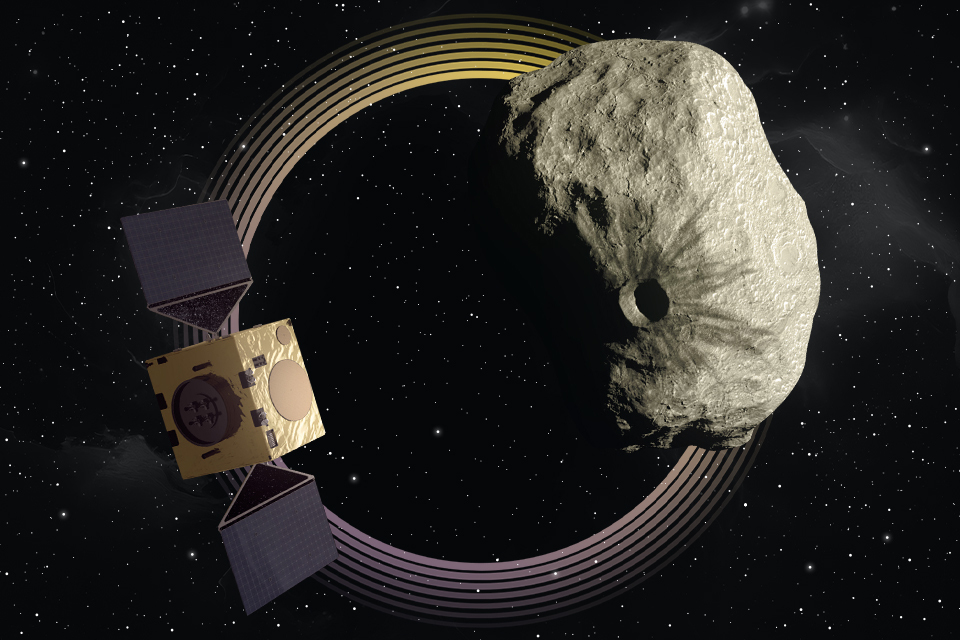
Earth Strikes Back
For billions of years, Earth has endured countless bombardments by celestial bodies, each irreversibly changing the course of our planet’s history. We only have to recall the impact event that occurred 66 millions years ago, when an asteroid wiped out all non-avian dinosaurs.
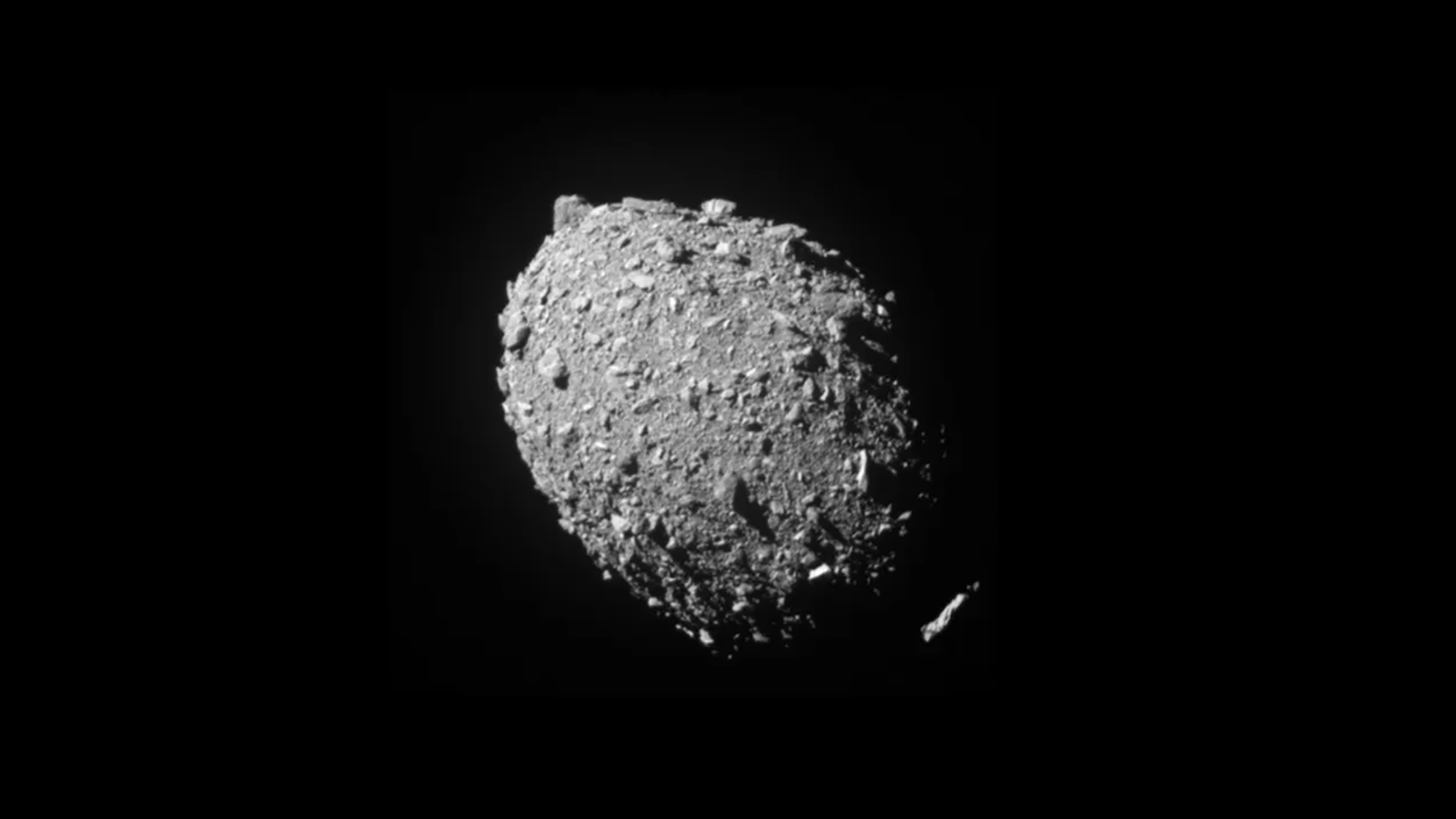
But 2022 was the year for humanity to finally strike back — NASA’s DART probe was intentionally crashed into Dimorphos, an asteroid moon measuring 520 feet across which orbits the 2,560-foot asteroid Didymos. The purpose of this experiment was to see whether we could protect Earth from celestial objects by altering their orbits with the kinetic impact method.
The Dimorphos impact, recorded by both ground observatories and space telescopes, exceeded scientists’ best expectations. Even by modest estimations, the crash displaced over a thousand tons worth of the asteroid’s rocky surface. Following the event, Dimorphos also spawned a long double tail of dust spanning roughly 6,200 miles.
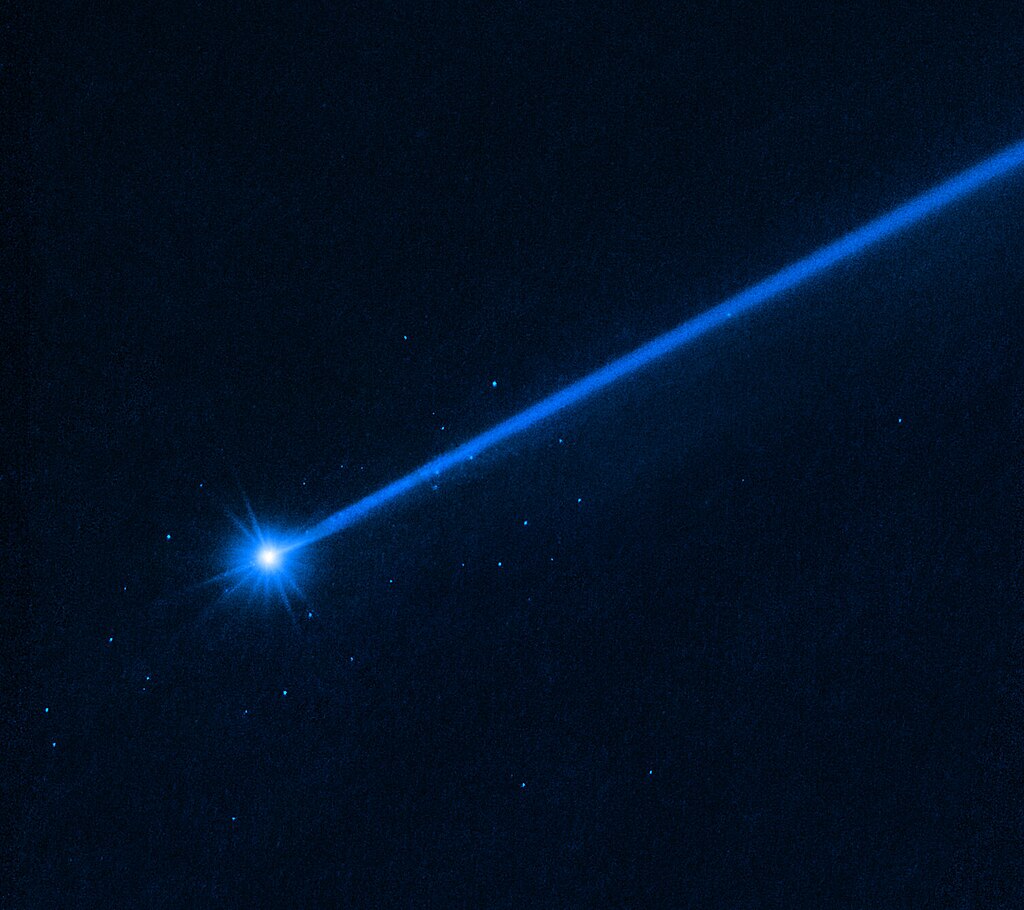
Moreover, the impact significantly altered the asteroid’s orbit. Before the event, it took Dimorphos 11 hours and 55 minutes to complete its orbit around Didymos. After the collision, its orbital period was cut short by about 33 minutes.
The ESA Space Detective
Despite the DART impact supplying scientists with plenty of data, some questions still remain unanswered. For instance, we don’t even know for sure whether the crash left a crater on Dimorphos’ surface. Computer models indicate that the collision might have changed the asteroid’s shape in its entirety. In which case, all craters would have been erased from its surface.
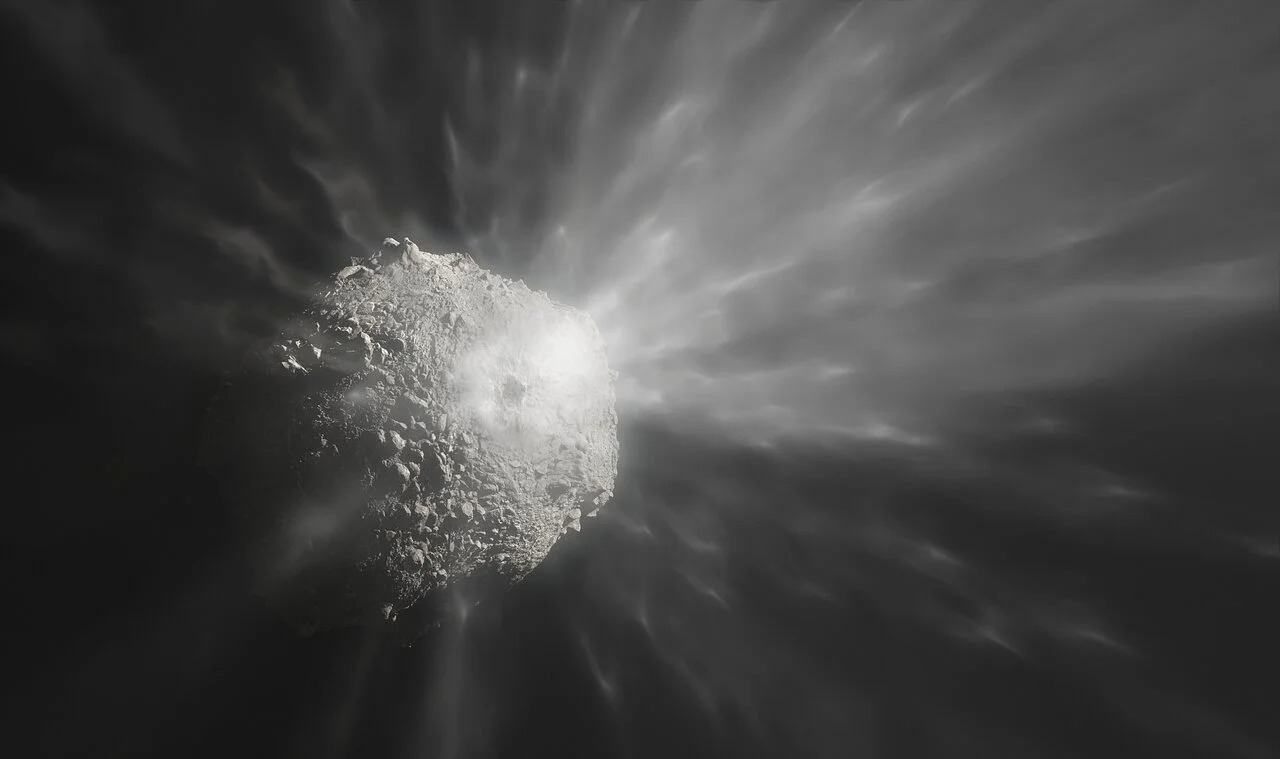
Calculating the asteroid’s new orbit with ground observations alone is quite difficult — the margin of error in this case reaches up to 10 percent. Scientists also don’t have the exact data for Dimorphos’ mass and internal composition. These values are crucial for estimating the effects of the crash. To understand the post-impact behavior of celestial objects is essential if we want to improve our planet’s defense systems against unwelcome space guests.
But this knowledge can only be obtained one way — by sending our own space sleuth to investigate the effects of the DART crash on Dimorphos and Didymos. This task has fallen to Hera.
Hera’s Technical Specifications
Commissioned by the European Space Agency, Hera was designed by the joint efforts of German-based OHB, who took care of the payload, and Italian Avia that built the propulsion module. Discounting the solar batteries, this cube-shaped spacecraft spans 5.2 by 5.2 by 5.6 feet and has a launch mass of 2,487 pounds.
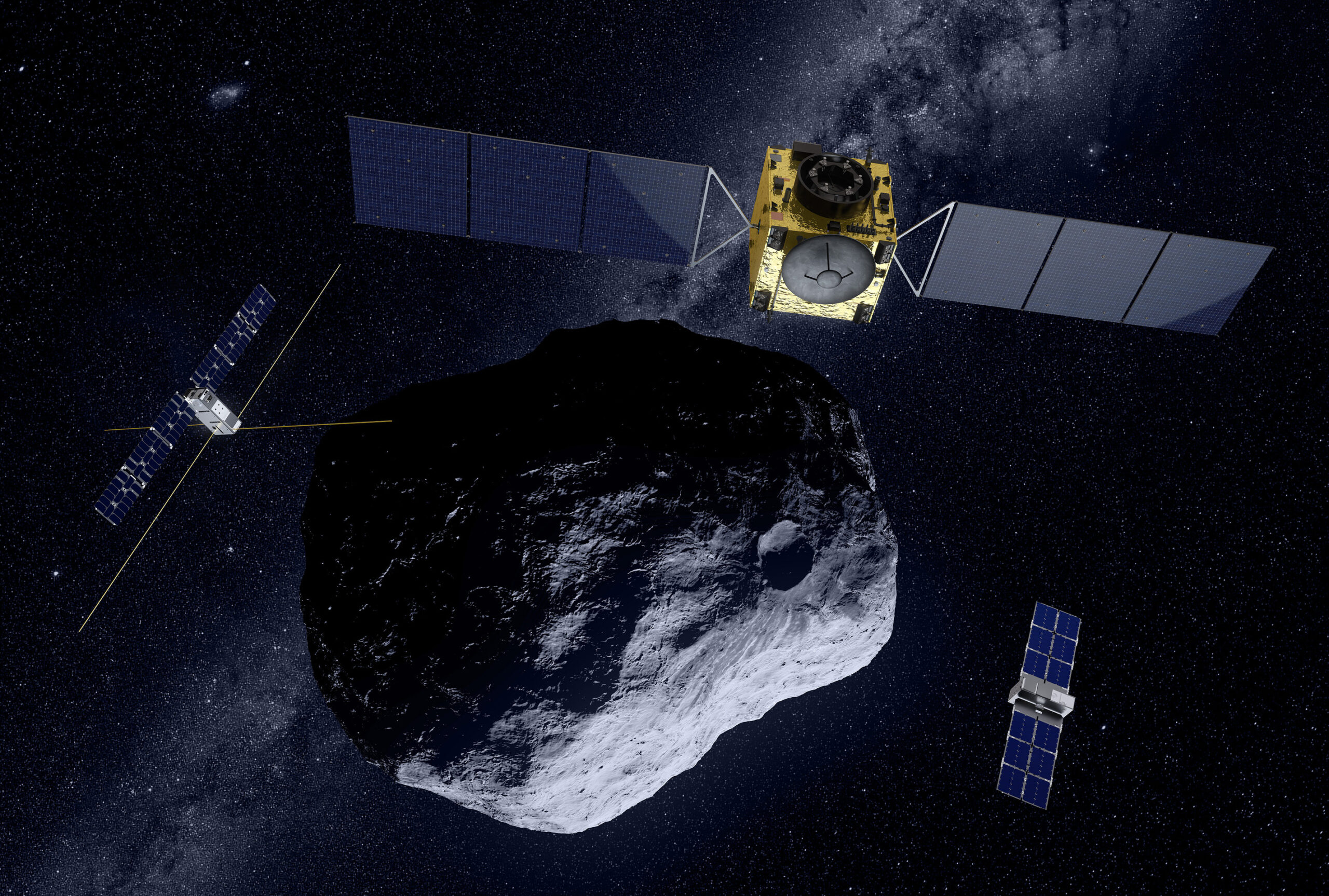
Hera is armed to the teeth with various observational instruments, carrying 11 in total. This equipment includes cameras, spectrometers, and a lidar, all of which allows the probe to map the surfaces of both asteroids while measuring their chemical compositions and orbital parameters.
Another curious addition to this mission is a pair of CubeSats, Milani and Juventas. They will be the first objects of their class to be launched by ESA into interplanetary space. Once Hera reaches its destination, the CubeSats will detach and commence their own scientific journey.
Juventas’ main instrument is the JuRa radar used to determine Dimorphos’ internal structure. When Juventas reaches the end of its main mission, engineers will attempt to land it on Dimorphos. If successful, the CubeSat will use its second essential instrument — the GRASS gravimeter — to record how Didymos effects Dimorphos’ surface gravity, which will help determine the smaller asteroid’s exact mass.
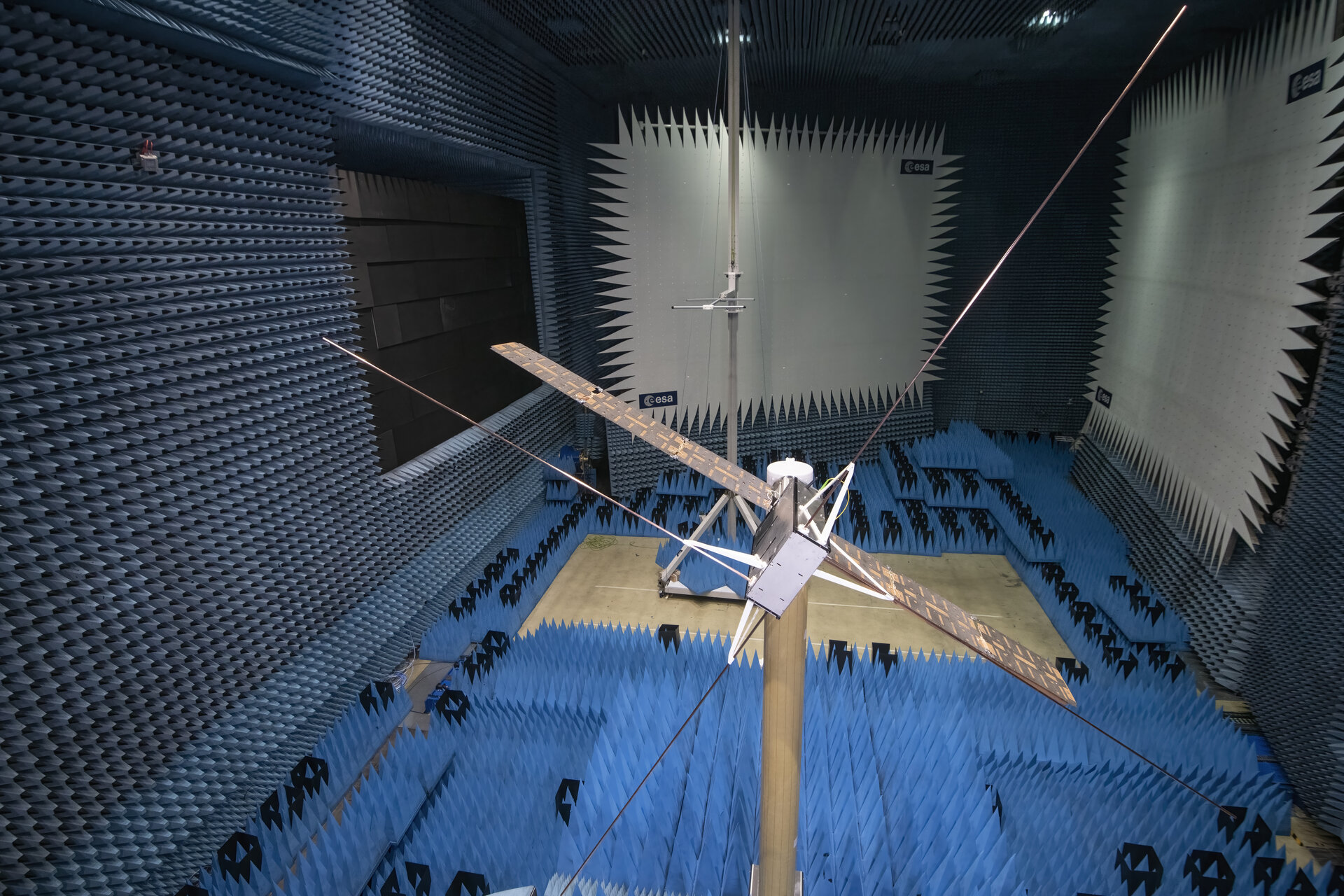
As for Milani, its main observational tool is the ASPECT hyperspectral imaging spectrometer that allows for the mapping of the asteroid surface with a resolution of up to 1 meter, or 3.3 feet. Other onboard instruments will enable Milani to analyze asteroid dust particles for volatile substances, such as water. Milani will also conclude its mission with a landing attempt on Dimorphos.
Hera’s Flight Plan
The initial plan was to deliver Hera into space on the new European rocket Ariane 6. When their launch vehicle program encountered delays, ESA had to turn to SpaceX and use the Falcon 9 rocket instead.
Hera’s launch is planned for October 7, 2024. It will perform a flyby of Mars en route, harnessing the planet’s gravity for acceleration. This slingshot rendezvous is supposed to take place in March 2025. Hera will pass Mars at the striking distance of about 3,700 miles and fly even closer to Dimorphos, at roughly 620 miles. Probe operators will activate observational instruments during Hera’s flight to take measurements and calibrate the tools when necessary.
Hera’s flyby of Mars will grant it the acceleration needed to reach the two asteroids. If successful, the spacecraft will arrive at its destination in December 2026. Hopefully, it will finally give us the answers about the DART’s impactful meeting with Dimorphos.


